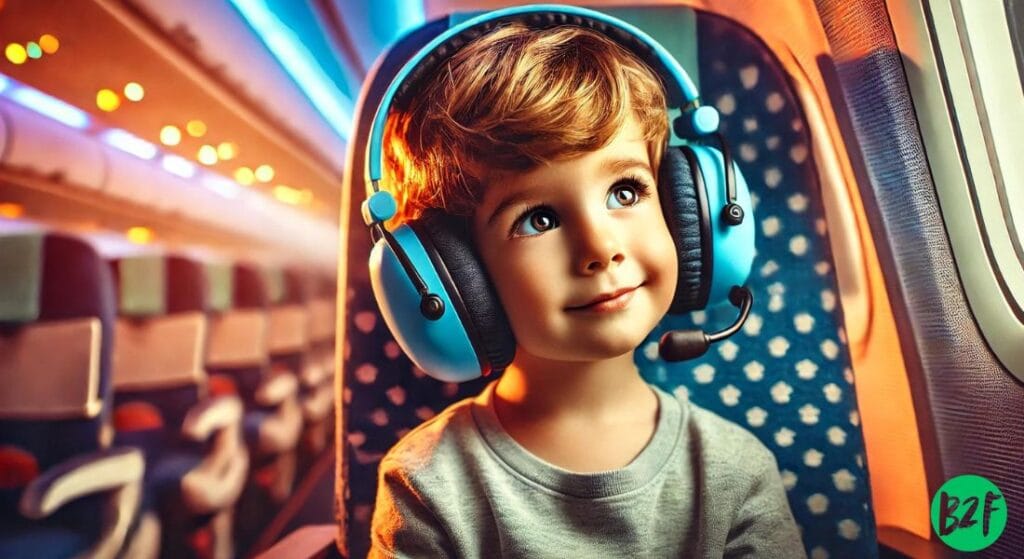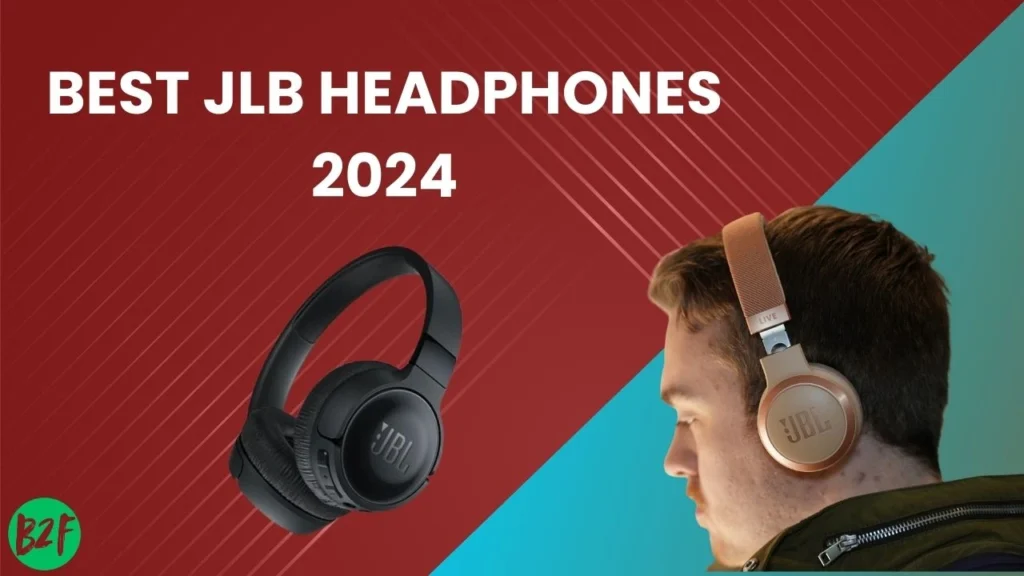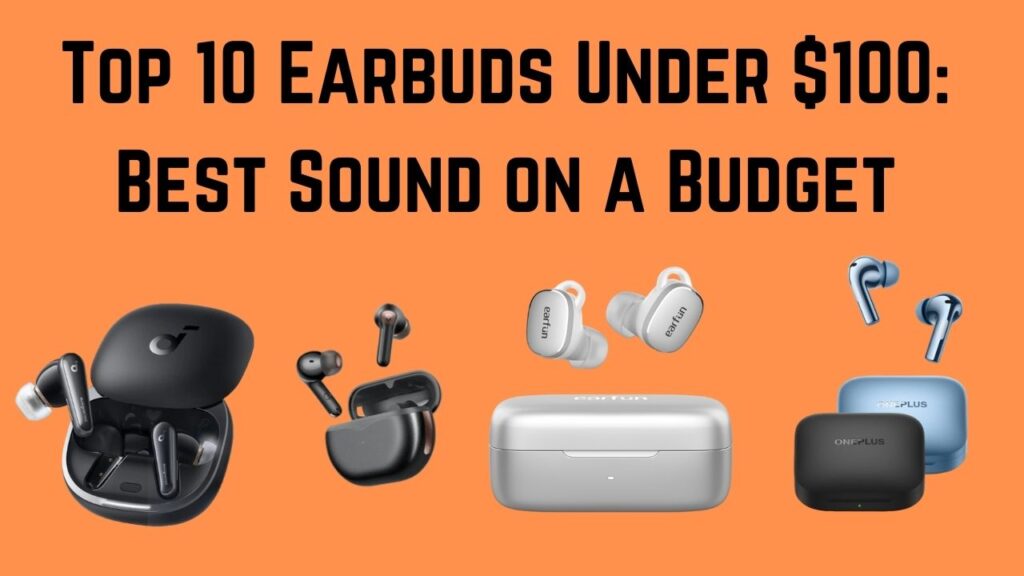Introduction
Aviation Headset for Infants and Kids. Flying with children, especially young ones, can be challenging. While it’s exciting to take your kids on flights, the loud engine noise and ear discomfort can make the journey stressful. That’s why aviation headsets are important for infants and kids, offering both comfort and safety during flights.
But with so many options available, how do you pick the best one for your child? In this guide, we’ll help you choose the best aviation headset for children, focusing on features that ensure safety, comfort, and enjoyment during air travel. Best earbuds for Riding Motorcycle.
1. Why Are Aviation Headsets Important for Kids?
Airplane engines produce noise levels that can exceed 85 decibels, which is unsafe for young, sensitive ears. Without protection, children might experience hearing damage over time or discomfort during the flight.
An aviation headset serves two key purposes:
- Noise Reduction: It protects your child’s ears from harmful engine noise.
- Communication: It allows kids to communicate with you or the pilot if needed.
Investing in the right aviation headset can make your child’s flying experience more comfortable and enjoyable.
2. What to Look for in a Child-Friendly Aviation Headset
When shopping for a headset for your child, here are the most important features to consider:
Noise Reduction Rating (NRR)
The Noise Reduction Rating (NRR) is the most important feature in a headset. The higher the NRR, the more noise it can block out. Look for headsets with at least 20dB of NRR to protect your child’s sensitive ears from engine sounds.
Fit and Comfort
Comfort is essential for young travelers. The headset should fit securely but not be too tight. Adjustable headbands are ideal, so the headset grows with your child. Soft, padded ear cushions will ensure comfort during long flights.
Weight
Look for a lightweight headset. Heavier models can cause discomfort or strain on your child’s neck over time. Lighter materials like plastic or soft metals are a good choice.
Adjustable Headbands
Ensure the headset has an adjustable headband to allow for a snug fit. This will prevent discomfort as your child grows and will keep the headset secure during the flight.
Bluetooth Compatibility
While not necessary for everyone, Bluetooth-enabled headsets can be a great bonus. They allow your child to listen to music, educational content, or watch movies on a tablet, making the flight more enjoyable.
3. Active vs. Passive Noise Reduction
There are two main types of noise reduction in aviation headsets:
- Active Noise Reduction (ANR): This type uses electronics to cancel out external sounds. ANR headsets are more effective, but they tend to be pricier.
- Passive Noise Reduction (PNR): PNR headsets use insulation materials to block out noise. While they’re not as effective as ANR, they’re more affordable and still provide decent protection for short flights.
For infants and toddlers, PNR headsets are a good choice since they are affordable and effective enough for most flights. ANR headsets might be more suitable for older children or longer journeys.
4. Age-Specific Recommendations for Aviation Headsets
Choosing the right headset depends on the age of your child, as infants, toddlers, and older kids have different needs:
For Infants (0-2 Years)
- Infants need headsets with soft padding and adjustable bands for a snug fit.
- Choose a lightweight, PNR headset with soft ear padding for maximum comfort.
- Ensure the headset is BPA-free and hypoallergenic to prevent skin irritation.
For Toddlers (2-5 Years)
- Toddlers are active and might try to remove their headsets during the flight.
- Look for a headset with a secure fit, comfortable padding, and a noise reduction rating suitable for engine noise.
- ANR headsets can be a good choice, but only if your child can handle the slightly heavier weight.
For Older Kids (5+ Years)
- Older kids can handle more features, such as Bluetooth and ANR.
- Look for adjustable headsets with quality sound and volume-limiting features.
- Make sure the headset can connect to devices, allowing kids to watch movies or listen to music.
5. Top Aviation Headset for Kids
1. David Clark H10-13.4 Aviation Headset
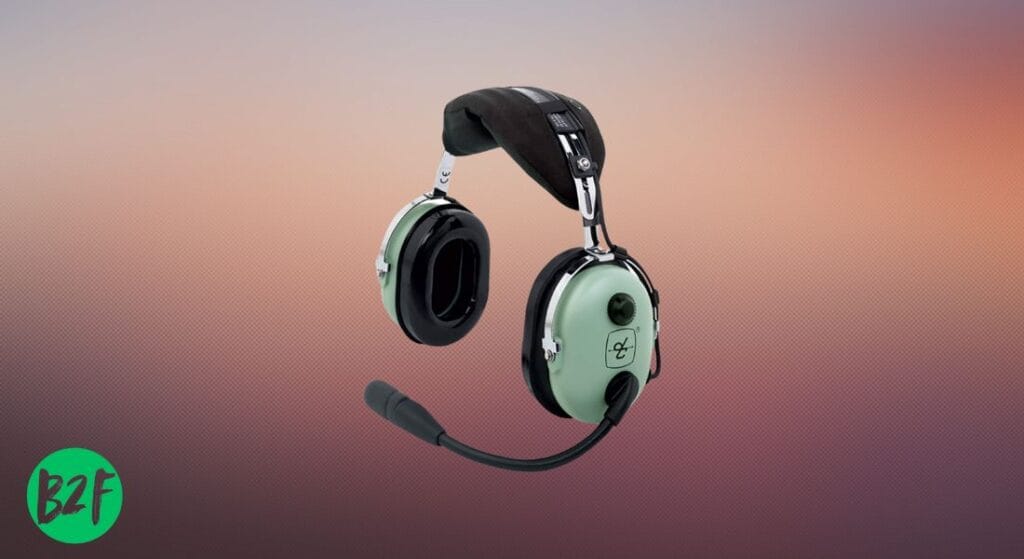
The David Clark H10-13.4 headset is an excellent choice for student pilots and budget-conscious users who want a high-quality headset without the hefty $1,000+ price tag. Thanks to a unique head cushion design that accommodates a button on top of the hat, the headset is especially comfortable and works well with hats.
Its ear pads are soft and effective at reducing ambient noise, providing a comfortable fit even during extended flights.
Pros:
- Affordable Quality: Excellent value for students or pilots wanting a durable headset without spending over $1,000.
- Comfort: Comfortable fit with soft ear pads and a two-part head cushion for compatibility with hats.
- Good Noise Reduction: Provides sufficient noise reduction for training flights and extended use.
- Clear Audio: High-quality audio clarity for hearing ATC and instructors.
- Ergonomic and Durable: Solid build and comfortable fit without side pressure; includes a 5-year warranty for added peace of mind.
- Fast Delivery: Quick delivery in excellent condition for some users.
Cons:
- Lacks Carrying Case: This does not come with a carrying case, which can make storage more challenging.
- Adjustable Head Size: Requires manual tightening to fit comfortably, which may be inconvenient for some users.
- Cable Storage Issue: The cable can poke against flight bag sides, creating minor inconvenience.
2. KA-1 General Aviation Headset
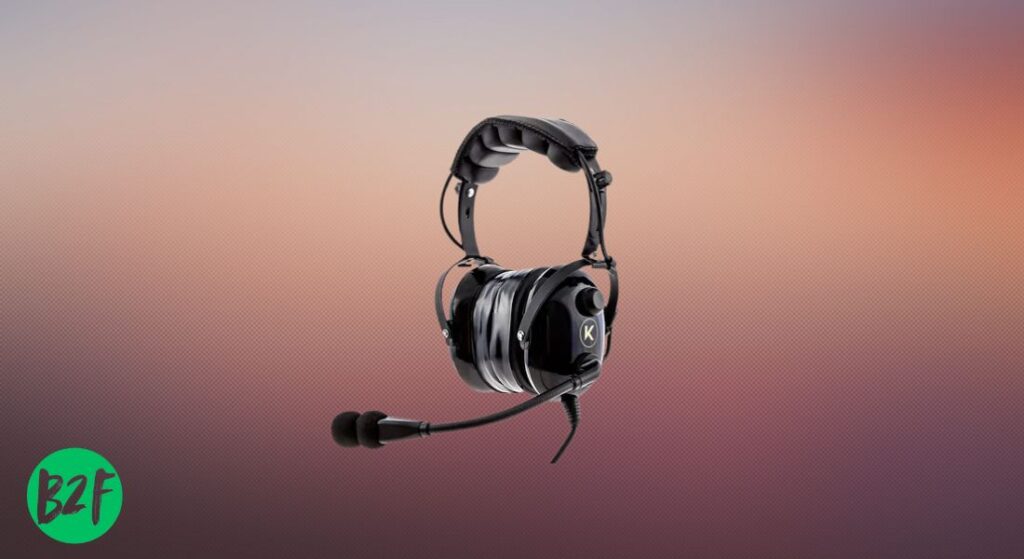
Superior Audio Clarity 24dB noise reduction rating and stereo output deliver clear sound with minimal background noise. Comfortable, Durable Design Ultra-soft silicone ear seals and thick head pad ensure comfort and longevity for extended use. AirPods 4 vs AirPods Pro.
Versatile Audio Setup Independent ear volume controls, lightweight speakers, and 3.5mm input for phone compatibility with easy mono/stereo switching.High-quality microphone Noise-canceling microphone with a flexible boom for clear communication in noisy settings.
Protective Carrying Case Free custom-fit bag for secure headset storage when not in use.
Pros
- Affordability: This headset is an excellent choice for budget-conscious pilots, providing great value without compromising essential features.
- Comfort: Gel pads and padded top ensure comfort, even on long flights, with a fit adaptable to different head shapes.
- Sound Clarity: Despite being a passive noise reduction (PNR) headset, it maintains good sound quality for clear in-flight communication.
- Sturdy Build: Durable construction makes it reliable for regular use and suitable as a long-term backup headset.
- Adjustability: Customizable fit with locking knobs ensures stability during flight.
Cons
- Warm Weather Comfort: Gel pads can become sweaty in hot weather, and additional covers (sold separately) may be necessary for comfort.
- Noise Reduction Limitations: As a PNR headset, it doesn’t match the noise cancellation capabilities of active noise reduction (ANR) models like Bose but still offers adequate reduction.
3. RA900 Premium Aviation Pilot Headset
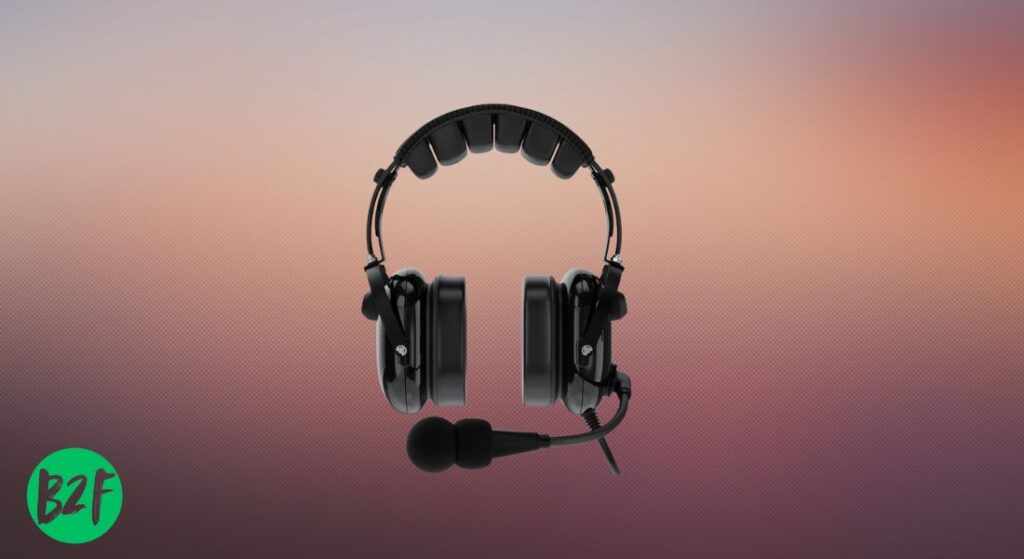
The RA900 headset offers a lightweight design that combines low clamping force with a mere 21.2 oz weight, making it perfect for long flights by ensuring lasting comfort. With a noise reduction rating (NRR) of 24db and an electret noise-canceling microphone, this headset guarantees crystal-clear audio clarity, letting you enjoy every detail of your journey. Top Type-C Earphones for Gaming.
Comfort is further enhanced by ultra-soft silicone gel ear seals, a thick head pad, and a custom-fit adjustable headband, making all-day wear a breeze. The headset also features independent volume controls for each ear, ultra-light neodymium speakers, and a 3.5mm input jack for connecting your phone, giving you the freedom to adjust audio to your preference.
It adapts easily to any intercom system with a built-in switch for mono and stereo modes, allowing seamless compatibility across different aircraft. To protect your investment, a free carry bag is included, ensuring safe storage and easy transport. Additionally, an ear cup-mounted push-to-talk button makes communication with the control tower effortless.
Pros
- Comfortable Fit: Many users highlighted the headset’s comfort, even over extended flights, comparable to higher-end brands like David Clark.
- Affordable Price: Considered a great value for a beginner headset, especially for student pilots or those not looking to invest heavily.
- Clear Sound Quality: Users could hear their instructors, ATC, and cockpit communication clearly, even without advanced noise cancellation.
- Good Sealing with Sunglasses: The headset seals well even when worn with sunglasses, enhancing user comfort.
- Stereo/Mono Options: Allows users to switch between stereo and mono, providing a customizable sound experience.
- Sturdy Construction: Reviewers noted its durability and high-quality build, adding to its perceived value.
Cons
- Tight Fit Initially: Some users found the headset slightly snug out of the box, requiring slight adjustments for a better fit.
- Ear Cushions May Detach: One user noted that the ear cushions detached easily, especially during repeated use.
4. RA200 Aviation Pilot Headset
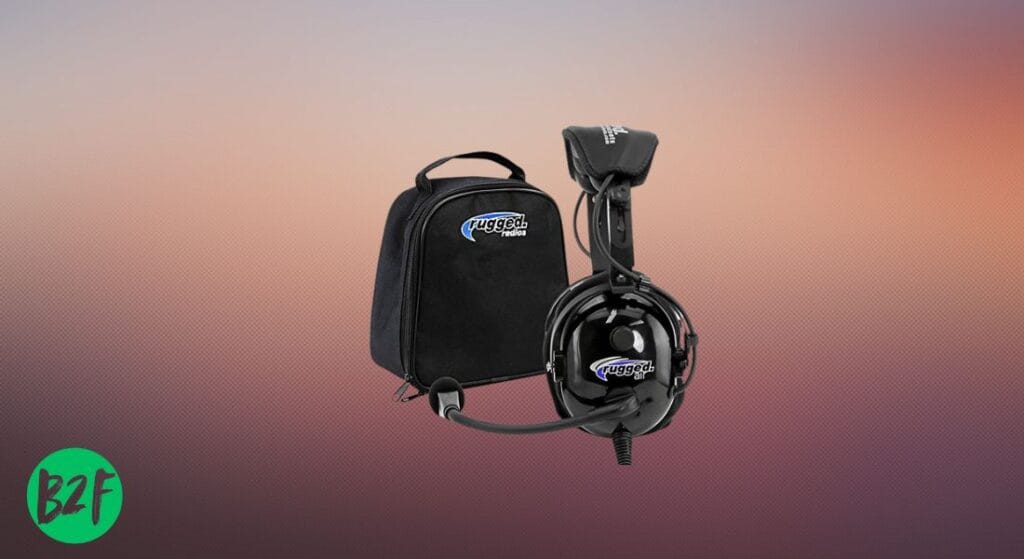
The RA200 headset is crafted for both comfort and durability, featuring a lightweight design at just 16 oz and soft foam ear seals to keep you comfortable during extended flights.
With a superior noise reduction rating (NRR) of 24db and a noise-canceling electret microphone, it delivers exceptional audio clarity, ensuring minimal background interference so you can communicate effectively.
The headset offers customizable audio with individual volume control on each ear, ultra-light neodymium speakers, and a 3.5mm input jack for easy phone audio connection. Equipped with a high-quality noise-canceling microphone, your conversations remain clear and uninterrupted.
To protect your investment, the headset also includes a complimentary padded bag, offering a safe storage solution when not in use.
Pros:
- Affordable Price: Great for budget-conscious student pilots.
- Comfortable Fit: Ergonomic cushioning for extended wear.
- Reliable Audio Clarity: Clear communication with effective noise-canceling, especially after adding gel ear seals.
- Sturdy Construction: Durable enough for regular use.
- Comes with Protective Bag: Convenient for safe storage and longevity.
Cons:
- Lacks Bluetooth Connectivity: Not suitable for users wanting music or additional audio features.
- Stiff Cord: May require time to become more flexible, though this can improve durability.
5. Fs Aviation Headset
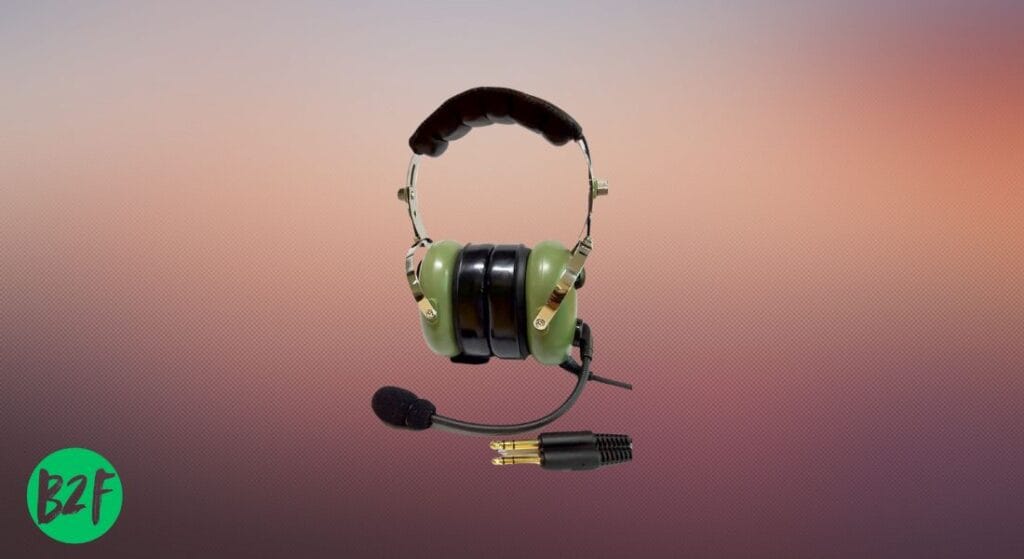
Dual (Differential) volume control knobs on each ear cup. Pre-amplifier with selectable filter and noise-canceling electret microphone with muff. Flexible mic boom with triple-plated chrome hardware. Ear seals made of silicone gel.
Microphone plug: 0.206-inch gold-plated. Microphone frequency range: 300-8,000 Hz with source impedance of 220-2,200 ohms. Speaker plug: 0.250-inch gold-plated with 150 ohms mono and 300 ohms stereo impedance. Speaker frequency range: 20-17,000 Hz. Headband: super durable.
Pros:
- Affordable Price – Great value for beginner or student pilots on a budget.
- Comfortable Fit – Comfortable to wear for long hours without frequent adjustments.
- Standard Aviation Plugs – Compatible with general aviation equipment, allowing for flexible use across different aircraft.
- Decent Audio Clarity – Sufficient sound quality for basic communication with minimal interference in most planes.
- Removable Head Cushion – Easily adjustable for pilots needing more headroom in confined cockpits.
- Lightweight Design – Ideal for student pilots and those who prefer less bulky headgear.
- Good Durability – Sturdy construction; several users report no issues over extended use.
Cons:
- Volume Limitations – Earphone volume only reaches a moderate level, occasionally impacting clarity over ATC and engine noise.
- Variable Performance Across Planes – Not all aircraft models are compatible, leading to intermittent sound cuts in some cases.
- Inconsistent Durability – At least one user experienced failure within eight months despite careful storage.
6. Maintaining and Caring for Your Child’s Aviation Headset
To extend the lifespan of your child’s aviation headset, regular maintenance is key. Here are some tips to keep the headset in excellent condition:
- Clean Ear Cushions: Use a damp cloth and mild soap to wipe down ear cushions after each use, especially if multiple children use the same headset.
- Store Properly: Place the headset in a protective case when not in use to avoid accidental damage.
- Check the Fit Regularly: As children grow, they may need adjustments to ensure the headset remains comfortable.
7. How to Introduce Headsets to Younger Children
Introducing a headset to an infant or toddler can be challenging if they’re not accustomed to wearing anything on their heads. Here are a few tips:
- Start Early: Let your child try on the headset at home before the flight to help them get used to the feel.
- Make it Fun: Show your child how the headset reduces noise by letting them wear it in a loud environment (like near a vacuum cleaner) so they can appreciate its purpose.
- Involve Them: Let your child choose a color or design they like, which can increase their willingness to wear it during flights.
8. Tips for Flying Comfortably with Kids
Aside from choosing the right headset, there are other strategies to ensure a pleasant flight experience for you and your children:
- Bring Snacks and Activities: Keep your kids entertained with snacks, coloring books, or small toys.
- Prepare for Takeoff and Landing: The pressure change during takeoff and landing can be uncomfortable for children. Have them drink water or chew on something to help relieve ear pressure.
- Use a Kid-Friendly Seat Cushion: For added comfort, consider bringing a travel cushion to make the seating more comfortable, especially for long flights.
9. Is a Specialized Aviation Headset Worth the Investment?
If your family flies frequently, investing in a high-quality aviation headset for your child can make a significant difference in their comfort and safety. Not only does it protect their hearing, but it also reduces their anxiety around loud airplane noises, making flights a more enjoyable experience for everyone.
Final Tips for Parents
Choosing the right aviation headset for your child can transform their flying experience, reducing stress and ensuring safety.
- Let Kids Get Used to the Headset at Home: Familiarizing them with it in a quieter environment may make it easier for them to wear on the plane.
- Invest in Quality if You Fly Often: Higher-quality headsets may be more expensive but can last longer and provide better comfort and protection.
- Consider Additional Protection: For infants, using earplugs in conjunction with a headset may be an option if they are especially sensitive to noise.
For families that fly occasionally, renting a headset may be a more economical option. However, it’s essential to ensure that the rented headset is sanitized and adjustable to fit your child properly.
Conclusion
Choosing the right aviation headset for infants and kids involves understanding their unique needs, and focusing on comfort, noise reduction, and ease of use. By selecting the right headset, you’ll not only protect your child’s hearing but also create a more comfortable and enjoyable flying experience.
Whether you’re taking a short family trip or flying frequently, a quality aviation headset can be a valuable investment for your little one’s well-being and peace of mind.

